

Suunto Blog
Face to Face with Emelie Forsberg – #SuuntoAdventure Video Series, Episode 1
In the first episode of #SuuntoAdventure Video Series you will meet Swedish trail runner, ski mountaineer and mountain lover Emelie Forsberg.
Emelie is all smiles – but don't let that fool you: she is fiercely competitive, too. Read Emelie's profile here.
Watch also the other episodes in the series:
Face to Face with Greg Hill – #SuuntoAdventure Video Series, Episode 2
Face to Face with Kilian Jornet – #SuuntoAdventure Video Series, Episode 3
Face to Face with William Trubridge – #SuuntoAdventure Video Series, Episode 4
Face to Face with Conrad Stoltz – #SuuntoAdventure Video Series, Episode 5
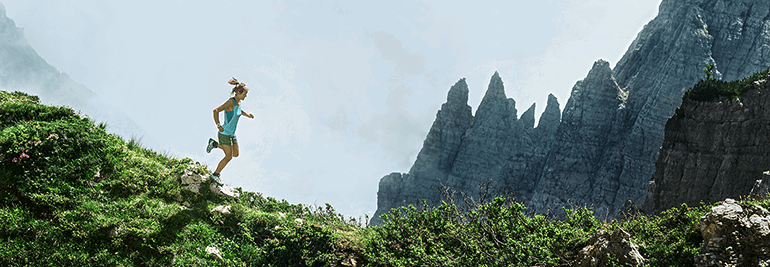
Emelie Forsberg, the unstoppable Swede
Talk to Emelie Forsberg and you'd think she's just another mountain-loving adventure girl with a fondness for baking home-made cookies. But behind the fun-loving Swede is a phenonenal podium-winning athlete – one who has excelled in several trail running disciplines – as well as competition ski-mountaineering.
A three-time Sky Running World Series champion (2012-2014), Emelie exceeds at marathon and ultra distance events. These are mountain trail races which feature several thousand meters of vertical ascent and range from 30 to over 50 km long over terrain that can range from loose rock to high altitude snow fields. To mountain runners these are races that are steeped in legend and lore, races like Zegama, Pikes Peak, Kima and modern classics like Transvulcania and the Diagonale des Fous.
She is fiercely competitive and has an impressive medal tally – too long to list here – but it's clear that winning is not her primary goal.
“I'm not going to remember a win in 40 years time — I will remember the view or the feeling,” she says.
There's a photo of her taken just before she crossed the finish line of the 80 km Mt Blanc marathon, a race that would crown her 2014 Skyrunning Ultra champion. It's distinctive for one feature – an enormous smile she can't contain. She looks as if she's just run a 5 k, far less a gruelling double marathon.
“From my heart I can truly say I enjoyed every second of it,” she wrote on her Facebook page shortly afterwards: “Pure skyrunning. J´adore! I love!”
It's Emelie's infectious love of running that shines through above all else.
“It's hard to describe it's so good,” she says. “You get a really good feeling in your legs. You feel so light – you're just flowing over the ground. You feel like really wow, I could go on forever, or wow, what a great feeling.”
It was this feeling that propelled her onto the professional circuit. One of her first wins was a local uphill mountain race in Norway's Yotunheimen national park in 2010. What is extraordinary is that prior to the race, and on the same day, Emelie decided to go for a run that became a 50 km ultra with 4,000 m of vertical.
“I was free that day so thought I would run around,” she says by way of explanation. “It was super beautiful.”
Not all races are beautiful experiences however. During the 2014 Kima she took a wrong turn and dropped from 1st to 5th position. She still finished 2nd.
And besides official races, she's also a fan of the Fastest Known Time (FKT) movement, which are self-organized and (often) solo attempts to break speed records on mountains. In 2014 she set the overall record on Sweden's highest mountain Kebnekaise, shaving 15 minutes off the previous record.
Big mountains play a big part in her life. When she's not competing Emelie loves to hang-out in the mountains, camping, hiking, climbing and skiing in winter. Of course, that also means competing on skis too, in the ski mountaineering world cup. Despite being a relative newcomer to the sport, 2015 brought Emelie her first podium, a third place in the Trofeo Marmotta.
“I like to be out in the mountains in the winter too,” she says, “and this is just another way. The training is the same as before just different on skis. It's fun to race, it's good training – actually the hardest training I have ever done!”
Where next for the Swedish athlete? Whatever it is, it's bound to involve some big mountain adventures. “The best times are when you're in the mountains, where the clock and the world outside don't count. Mountains are simplicity, freedom and responsibility — everything that I love!”
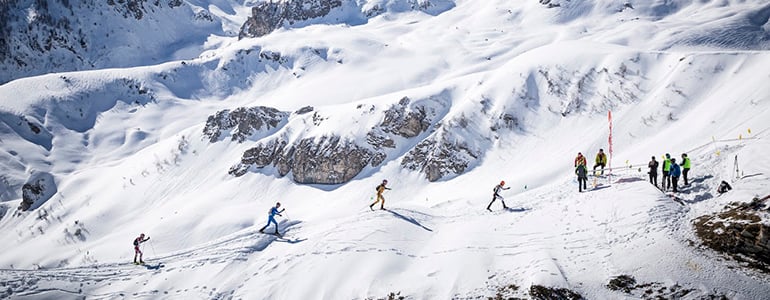
Ski-mo success for Kilian Jornet and Emelie Forsberg
Kilian Jornet and Emelie Forsberg climbed to second and third overall respectively in the Ski Mountaineering World Cup rankings after some solid performances at Prato Nevoso, Italy. Kilian pushing downhill. ©ISMFAnother exciting weekend for Suunto Ambassadors, Kilian Jornet and Emelie Forsberg. The pair joined dozens of the world's best ski-mo racers under the incredible blue skies of Prato Nevoso, Italy for one of the final races of the season.Kilian had some mixed results – finishing second in the vertical race, fourth in the individual race and 22nd in the sprint. He has two more shots at reaching his ultimate goal at the end of April – winning the overall ranking in the World Cup, which combines the different Ski Mountaineering World Cup disciplines. Currently, Kilian lies in second spot behind overall leader Robert Antonioli. He said: ‘‘The combined World Cup is a title I’d really like to try to win because it proves the versatility of the skier in the different events. I’m second right now, but I am I hoping to score enough points in the two races left, to be able to fight for victory against Roberto.”Emelie in action. ©ISMFNot to be outdone, Emelie Forsberg placed second in both the individual and sprint races, and fourth in the vertical race. It was her first-ever second-place finish in a World Cup competition, and with two team races left, moves her up to third position in the overall rankings.She said: “I am feeling very well in this moment of the season. The results this weekend couldn’t have been better and now I am third in the overall ranking. I’ll try to keep the good energy for the races left.”
Despite the individual events coming to an end, the Ski Mountaineering World Cup is far from over. Check out Check out ISMF on Facebook for updates, photos and lots of exciting videos from the Ski Mountaineering World Championship.RACE LINK:http://www.mondoleskialp.it/All photos ©ISMF
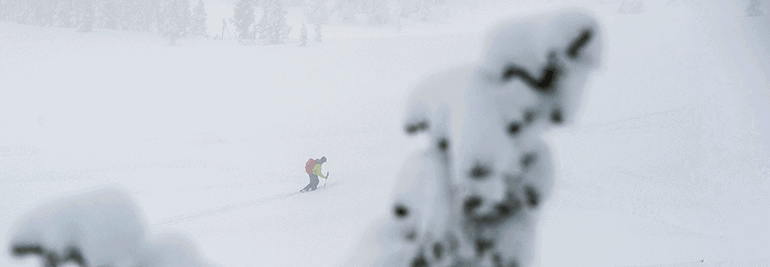
TUTORIAL TUESDAY: WHERE AM I? FINDING YOUR LOCATION WITH AN AMBIT
Figuring out where you are is fairly simple when you have a map, the visibility is good and you can identify a few landmarks. But when the going gets rough, the weather is against you and the sun sets, the task isn’t so simple any more. In this tutorial you will learn how your Ambit can help you to find your location.
The basics are simple: you can find your current position with a few clicks of the Ambit.
Choose: Navigation – Location – Current
To make sure you get the satellite fix as quickly as possible, remember to sync your Ambit regularly and keep it up to date.
Once you have found the GPS signal you will get your current location in geographic coordinates. The most common coordinate system in GPS devices is WGS84, which is also used by default in Suunto GPS watches.
Use the same coordinate system on your watch and map
If you need to give your exact location to someone in a rescue situation, WGS84 works. But when you start using a map and defining your location on it, you will need to make sure your GPS watch and the map use the same coordinate system. (To change your Ambit’s coordinate system go to General – Formats – Position format.)
Latitude/longitude is the coordinate system used in marine navigation and is common on topographical outdoor maps. Latitude lines run horizontally. The zero latitude is the Equator. Longitudes run vertically and the zero longitude runs through Greenwich, England. The latitude is normally the first number expressed in lat/long coordinate (for example 60°16'19" N 24°58’23’’ E).
WGS84, which uses latitudes/longitudes, is actually more than a coordinate system: it also includes a model of the globe that enables the use of GPS altimeters.
UTM is a grid coordinate system that is used on many outdoor maps. It divides the map into a perpendicular grid in which each of the squares are the same size anywhere on the map. This means the coordinate system is tied directly to a distance in meters.
This Norwegian map has both WGS84 (black) and UTM (blue) coordinates.
The black numbers on the sides of the map are degrees latitude; the numbers on the top and bottom of the map are degrees longitude. To determine your location on the map, draw a west to east line through the corresponding latitude and a south to north line through the corresponding longitude. The intersection of the two lines indicates your position.
The blue numbers are the northings and eastings of the UTM coordinate system. You can use them like the lat/log when finding your location on the map.
You can get support for your Suunto product at support
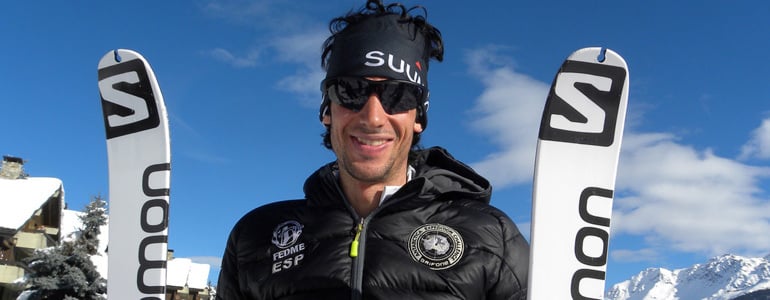
How to transition like Kilian
Every second counts in the world of skimo racing, and a quick changeover between uphill and downhill sections can make all the difference. For regular ski tourers, it's always an impressive sight to see how the pros do it in just a few seconds. Here, ski mountaineering world champion Kilian Jornet reveals his top tips for an efficient transition. And check the video below to see him in action.
1. Think ahead
As I arrive at the transition, I start to mentally prepare for both the transition and the downhill stretch of the race that will follow. Do I have any more uphill sections, or will this be the final run down? This is important as it determines how I remove and store my skins.
2. Get ready
A few meters before I reach the top, I open my suit and remove my pole straps, ready to lay them down on the floor as I enter the transition area.
See how Kilian does it.
3. Change modes
After putting my poles on the floor, I switch the boots to ski mode with both hands, and then twist the binding into the downhill position.
4. Skins off
If there are more uphill sections to come, I take the top of the skin in one hand before kicking my foot forward and ripping the skin off in one fluid motion. I fold the skin in half, tuck it in my suit and repeat the process with the second skin. If it’s the last downhill of the race I won’t need to use the skins again so I rip the skins off in quick succession and store them together in my suit.
5. Setting off
Lastly I zip up my suit, pick up my poles, check my heels are locked in and get ready for the downhill descent.
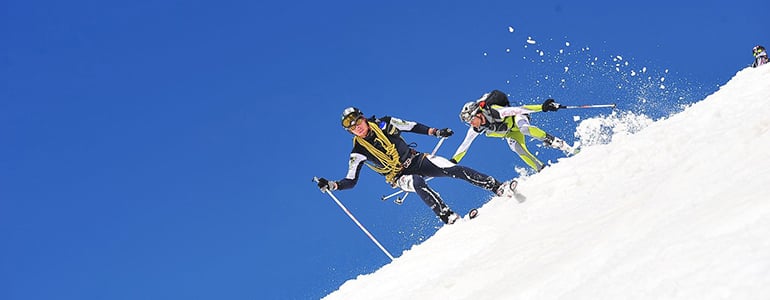
The Mezzalama Trophy: Meet the world’s toughest Ski Race
The Mezzalama Trophy is one tough challenge. The iconic, high-altitude ski mountaineering race takes place in the Cervinia region of Italy every other year, and sees about 300 teams of three skiers tackle some of the toughest terrain in the Alps. We take a closer look at this historic competition and the Suunto athletes training for the 20th edition of the race. As part of the “big three of ski mountaineering,” The Mezzalama Trophy is among the highest alpine ski mountaineering events of the world. It's a 45 km race with 3,430 m of vertical ascent. But it’s not only the competition’s toughness and high altitude that makes it so appealing – it’s Mezzalama’s history. Established back in 1933, it’s one of the oldest races of its kind, and holds historic significance in the minds of many skiers. Like in 1934, when a young German solo skier called Anderl Heckmair overtook all competing teams despite starting one-and-a-half-hours after the pack. Heckmair would later achieve global fame for leading the hardest pitch during the first ascent of the North Face of the Eiger four years later. Check out the Mezzalama Trophy Trailer below:
This year, in commemorating 150 years since the first ascent of the Matterhorn, the Mezzalama Trophy route will run in reverse. The race will guide athletes from Gressoney-la-Trinité to Breuil-Cervinia – the exact opposite of previous editions. The change adds about 350 meters of altitude to the route.Of those competitors, Suunto ambassador, Kilian Jornet will once again join his teammates in Italy. “As every year, I'm happy to compete and be able to combine different modalities and distances,” says Kilian.Also in the lineup, and further down the pack, will be a team from Suunto made up of guide Fabien Meyer, ice climber Matthias Scherer and digital manager for France, Franck Largeault. “Heckmair's incredible dedication to alpinism is for me a great example of the spirit of mountaineering,” says Matthias. “I would never dare to compare myself to him but I love his commitment and spirit. He was psyched to run this race, to be out in the mountains, to feel strong and alive. I am stoked to race it!”
Franck Largeault is preparing for the challenge of his life. ©Franck Largeault
The team have been training hard. “To create any good training plan, a good starting point is required,” Largeault says. “We therefore conducted aerobic and technical stress tests to assess our fitness levels. These starting points allowed us to establish our training plan and use the remaining 6 weeks to prepare.” Largeault explains: “We used the Ambit 3 Peak to perform the tests by measuring our heart rates, climbing rates etc.”The 2015 edition of the extraordinary Mezzalama Trophy kicks off on April 25. Stay tuned for more updates.
Images ©pantacolor.it














































































